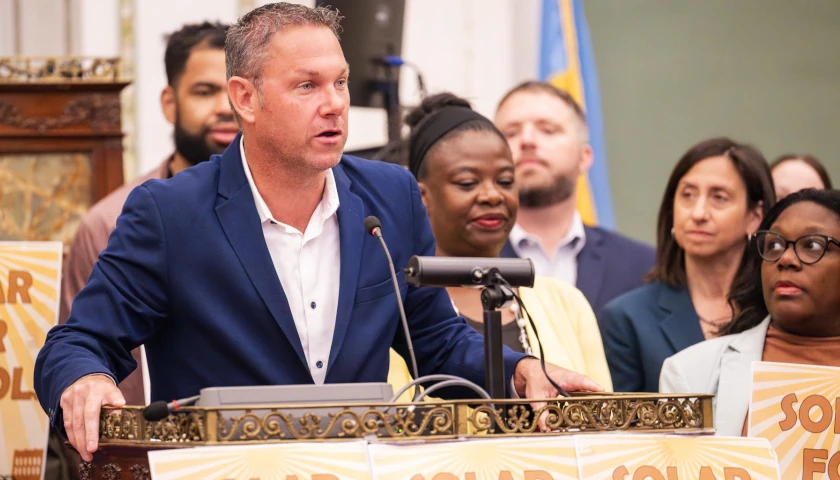The American Academy of Pediatrics (AAP) is recommending more aggressive treatment of childhood obesity, including the use of pharmaceutical and surgical interventions for those as young as 12 or 13.
In its new guidance released Monday in the organization’s journal Pediatrics, AAP dismisses the sole approach of monitoring still-growing children to see if independent changes families and children can make on their own leads to success. Such a wait-and-see method is largely useless, the authors of the guidance say, given that “14.4 million children and adolescents” are now affected by obesity and its long-term health consequences.
2/ The new policy defines obesity as a disease that be treated successfully with the recognition that complex genetic, physiologic, socioeconomic, and environmental factors are at play.
— American Academy of Pediatrics (@AmerAcadPeds) January 9, 2023
According to the Centers for Disease Control and Prevention (CDC) about 20 percent of American children and adolescents are obese, more than three times the percentage in 1970.
AAP also sets out immediately to name “racism” as a possible cause for childhood obesity in some populations and states the traditional monitoring and lifestyle changes recommended to treat the condition may be “stigmatizing” to certain families and not “culturally competent.”
The multiple “socioecological, environmental, and genetic influences” that lead to childhood obesity “tend to be more prevalent among children who have experienced negative environmental and SDoHs [social determinants of health], such as racism,” the organization says as it explains its approach to its guidance, and adds:
The AAP is dedicated to reducing health disparities and increasing health equity for all children and adolescents. Attainment of these goals requires addressing inequities in available resources and systemic barriers to quality health care services for children with obesity. To that end, “practice standards must evolve to support an equity-based practice paradigm” and payment strategies must promote this approach to care.
“Inequalities in poverty, unemployment, and homeownership attributable to structural racism have been linked to increased obesity rates,” the AAP authors continue, adding:
Racism experienced in everyday life has also been associated with increased obesity prevalence. Youth with overweight and obesity have been found to be at increased risk not only for weight-based harassment but also for sexual harassment and harassment based on race and ethnicity, socioeconomic status (SES), and gender.
The organization lists as “structural and contextual factors that impede and influence health and treatment” of obesity:
- Access to Care
- Weight Bias and Stigma
- Obesogenic Environments
- Adverse Child Experiences
- Racism
- Health Inequities
The AAP guidance seeks to reframe the problem of chronic child obesity as not the result of lifestyle choices.
“Obesity is not a lifestyle problem. It is not a lifestyle disease,” Aaron Kelly, co-director of the Center for Pediatric Obesity Medicine at the University of Minnesota, said, according to the Associated Press (AP). “It predominately emerges from biological factors.”
While the treatment guidelines still include “using motivational interviewing that addresses nutrition, physical activity, and health behavior change using evidence-based targets for weight reduction and health promotion,” AAP’s new approach is more immediate and intensive.
Pediatricians are urged to integrate “weight management components and strategies across appropriate disciplines, which can include intensive health behavior and lifestyle treatment, with pharmacotherapy and metabolic and bariatric surgery if indicated.”
The new guidance is published as several drug treatments for obesity in children have just been approved, including Wegovy (semaglutide), produced by Novo Nordisk, which is an injection taken weekly by children aged 12 and over.
According to a recent study, published in the New England Journal of Medicine, Wegovy was shown to reduce body mass index (BMI) in teens by about 16 percent, on average.
“Waiting doesn’t work,” Dr. Ihuoma Eneli, co-author of the new AAP guidance on obesity, said, reported AP. “What we see is a continuation of weight gain and the likelihood that they’ll have (obesity) in adulthood.”
Dr. Sandra Hassink, medical director for the AAP Institute for Healthy Childhood Weight and also a co-author of the guidance, echoed the concept that obesity is “a personal problem, maybe a failure of the person’s diligence,” is now inaccurate.
“This is not different than you have asthma and now we have an inhaler for you,” she said.
Dr. Robert Lustig, a specialist in pediatric endocrinology at the University of California, San Francisco, however, is exercising caution, expressing concern some doctors will quickly turn to drugs and surgery to treat childhood obesity.
“It’s not that I’m against the medications,” Lustig said, according to AP. “I’m against the willy-nilly use of those medications without addressing the cause of the problem.”
Lustig recommended assessing each child individually to evaluate the multiple factors that contribute to obesity, especially diet, which, in obese children, he said, often includes highly processed foods that are high in sugar and low in fiber.
– – –
Susan Berry, PhD, is national education editor at The Star News Network. Email tips to [email protected].






What a crazy bunch of “doctors”. Pills and surgery for children. Butchers, I say. Butchers.